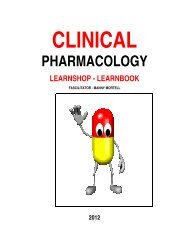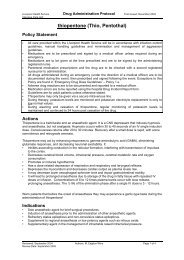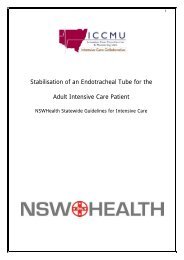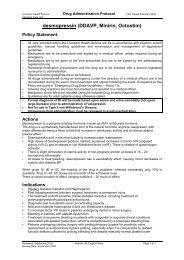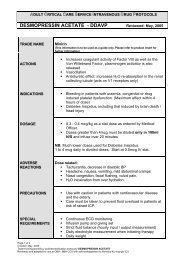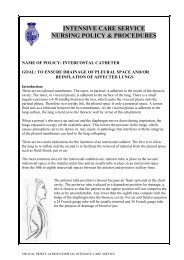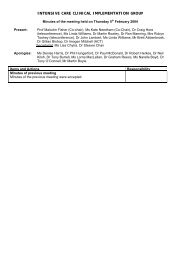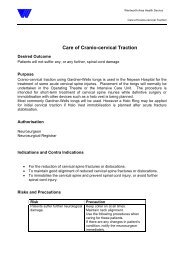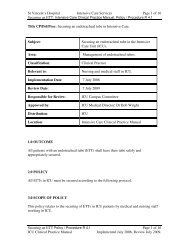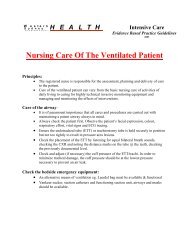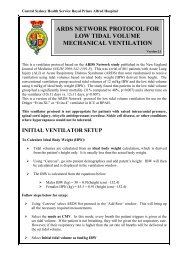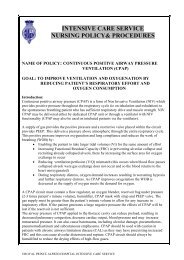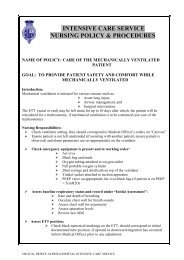A quick reference guide to haemofiltration and renal failure March ...
A quick reference guide to haemofiltration and renal failure March ...
A quick reference guide to haemofiltration and renal failure March ...
Create successful ePaper yourself
Turn your PDF publications into a flip-book with our unique Google optimized e-Paper software.
CVVHF<br />
Continuous Veno-Venous Haemofiltration<br />
Arterial cannulation carries added risks of bleeding, infection <strong>and</strong><br />
vessel damage. For this reason, the development of pumps <strong>to</strong><br />
achieve continuous <strong>haemofiltration</strong> using venous access only,<br />
prevails in most ICUs. A double lumen catheter is used <strong>to</strong> access<br />
a central vein, usually femoral, subclavian or jugular.<br />
Blood is driven though a highly permeable membrane<br />
(haemofilter) by the peristaltic pump. This is achieved through an<br />
extracorporeal circuit, whereby blood is removed through one<br />
lumen (called the arterial) <strong>and</strong> then returned <strong>to</strong> circulation via<br />
the other lumen (called the venous lumen). Ultrafiltrate<br />
generated as a result of movement across the membrane is<br />
replaced with appropriate fluid <strong>to</strong> achieve volume control <strong>and</strong><br />
blood purification. The addition of replacement fluid may be pre-<br />
filter (predilution) or post-filter (postdilution). (Bellomo, Ronco <strong>and</strong><br />
Mehta, 1996:S3) <strong>and</strong> (Bellomo in Eo, 1998:367).<br />
V + pump V<br />
UF<br />
V – vein, R – replacement fluid, UF – ultrafiltrate.<br />
R<br />
9



